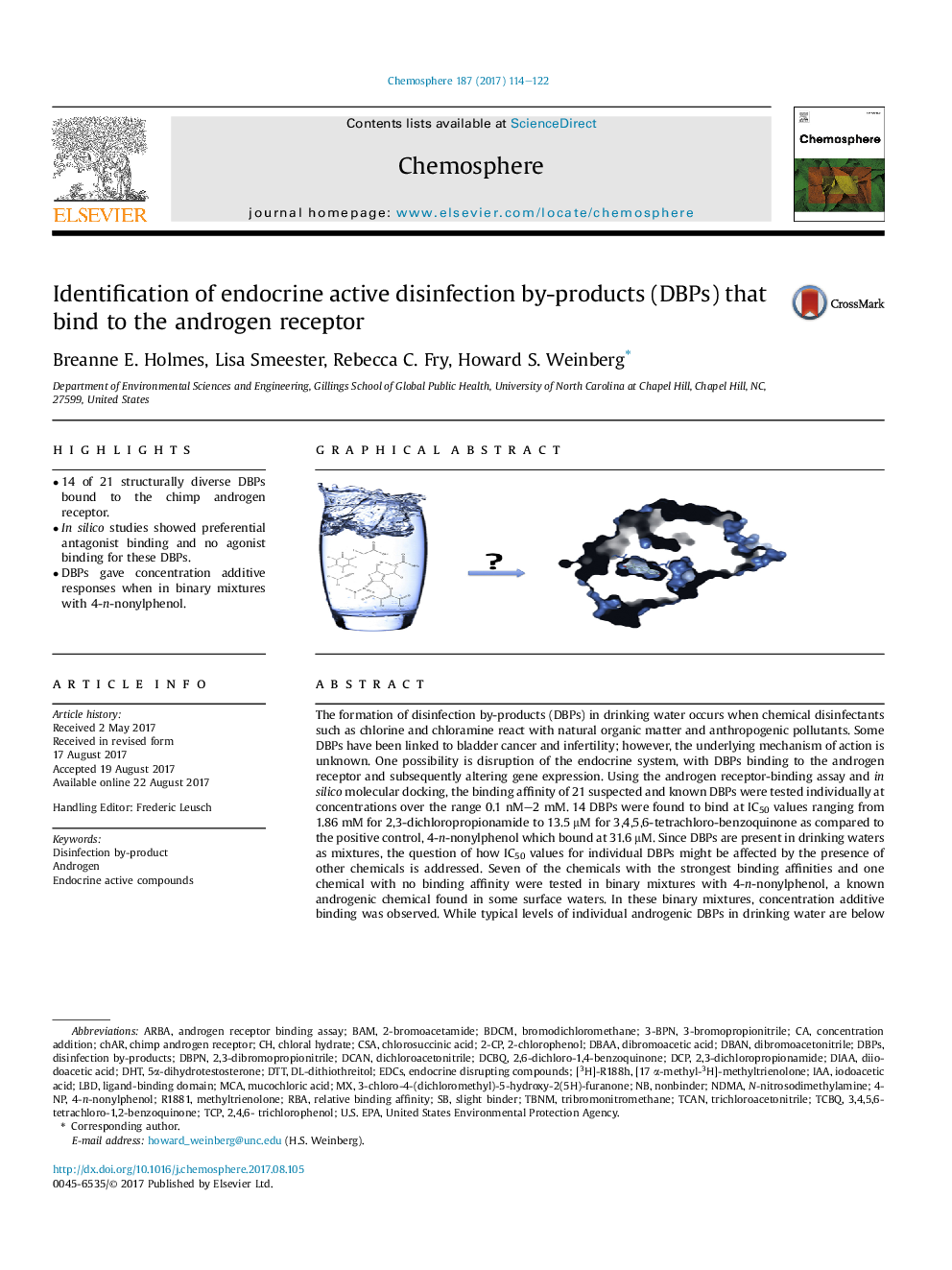| کد مقاله | کد نشریه | سال انتشار | مقاله انگلیسی | نسخه تمام متن |
|---|---|---|---|---|
| 5746433 | 1618784 | 2017 | 9 صفحه PDF | دانلود رایگان |

- 14 of 21 structurally diverse DBPs bound to the chimp androgen receptor.
- In silico studies showed preferential antagonist binding and no agonist binding for these DBPs.
- DBPs gave concentration additive responses when in binary mixtures with 4-n-nonylphenol.
The formation of disinfection by-products (DBPs) in drinking water occurs when chemical disinfectants such as chlorine and chloramine react with natural organic matter and anthropogenic pollutants. Some DBPs have been linked to bladder cancer and infertility; however, the underlying mechanism of action is unknown. One possibility is disruption of the endocrine system, with DBPs binding to the androgen receptor and subsequently altering gene expression. Using the androgen receptor-binding assay and in silico molecular docking, the binding affinity of 21 suspected and known DBPs were tested individually at concentrations over the range 0.1 nM-2 mM. 14 DBPs were found to bind at IC50 values ranging from 1.86 mM for 2,3-dichloropropionamide to 13.5 μM for 3,4,5,6-tetrachloro-benzoquinone as compared to the positive control, 4-n-nonylphenol which bound at 31.6 μM. Since DBPs are present in drinking waters as mixtures, the question of how IC50 values for individual DBPs might be affected by the presence of other chemicals is addressed. Seven of the chemicals with the strongest binding affinities and one chemical with no binding affinity were tested in binary mixtures with 4-n-nonylphenol, a known androgenic chemical found in some surface waters. In these binary mixtures, concentration additive binding was observed. While typical levels of individual androgenic DBPs in drinking water are below their measured IC50 values, their combined binding abilities in mixtures could be a source of androgen disruption.
161
Journal: Chemosphere - Volume 187, November 2017, Pages 114-122